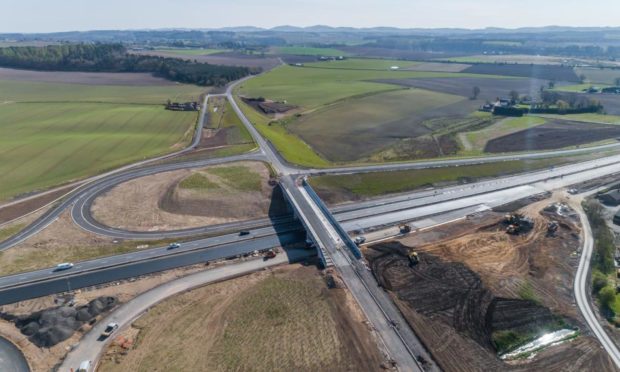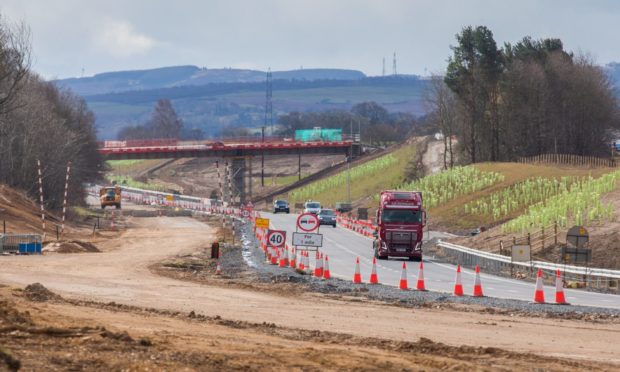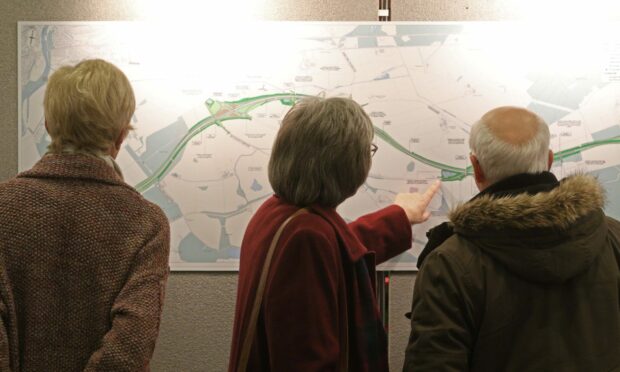Sustainable transport campaigners say they are hoping the SNP’s proposed deal with the Greens will spell the end of work to dual the A9 and A96.
Colin Howden, director of Transform Scotland, said he believed there “might be some movement” on multibillion-pound road projects if a power-sharing pact is confirmed.
Work to upgrade the two key routes between Inverness and Perth, and Inverness and Aberdeen, have been demanded for decades by many to try to improve road safety and spur economic growth.
However, the SNP is thought to be close to reaching a Holyrood deal with the Greens, who have been long-standing opponents of investment in new road-building, arguing that the money would be better spent on public transport schemes, as well as more sustainable initiatives to promote walking and cycling.
Questions have already been raised recently about the government’s commitment to the projects, amid fears that the pandemic has impacted the timetable for both.
However, ministers have said a new procurement strategy is currently being drawn up to ensure the A9 upgrade can be delivered “efficiently and within budget”.
In a new “Roads to Ruin” report, published on Tuesday, Transform Scotland criticised Scottish ministers for intending to nearly double their spending on new roads over the next decade, despite promises to tackle the climate emergency.
Mr Howden urged the government to “set out exactly which roads they’re going to abandon” to meet climate goals, claiming it would be a “national embarrassment” if they failed to act in the run-up to the COP26 climate conference in Glasgow.
Appearing on the BBC’s Good Morning Scotland radio programme, Mr Howden specifically highlighted the A9 and A96, as well as schemes to ease congestion in Inverness, such as the East Link and Longman roundabout upgrade.
He expressed hope that the proposed SNP-Green deal might lead to a rethink, saying: “The Greens would, I think, tend to agree with us with our critique of the Scottish Government’s road programme, so yes, I would hope that perhaps there might be some movement here.”
The Greens would, I think, tend to agree with us with our critique of the Scottish Government’s road programme, so yes, I would hope that perhaps there might be some movement here.”
The A9 dualling had a target completion date of 2025, while the A96 upgrade was supposed to be finished by 2030.
The first of 11 sections of A9 dualling, between Kincraig and Dalraddy, opened in 2017, with work on the second part between Luncarty and Pass of Birnam expected to be completed in winter this year.
Ministers announced earlier this year that a new link road around Nairn has been approved as part of the A96 revamp.
A Transport Scotland spokesman said: “The Sustainable Investment Hierarchy, as set out Scotland’s National Transport Strategy, is clear that we will not build infrastructure to cater for forecasts of unconstrained increases in traffic volumes.
“This approach is embedded in the second Strategic Transport Projects Review (STPR2), which is in progress and due to report later this year, will consider how the impact of the Covid-19 pandemic may shape our future transport system, the demands placed on it, as well as identifying transport interventions which help deliver our commitment to create an inclusive and net zero emissions economy.
“The publication of our STPR2 Phase 1 recommendations in February clearly set out our ambitions to maintain and make best use of our existing transport assets over building new infrastructure.
“All major projects within the Scottish Government’s transport portfolio are subject to significant assessment work to ensure we deliver the right schemes and minimise impacts on the environment.
“We need to balance the extensive changes required to meet a target of net-zero greenhouse gas emissions with our duty to ensure that Scotland has high quality infrastructure to meet the needs of all our residents, businesses and visitors.”


